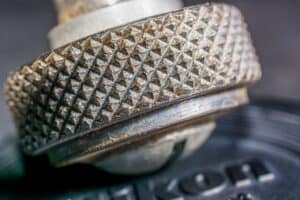If you’ve ever had a need for steel parts, you’ve probably heard about the hardening process. This heat treatment process, which is mainly used for steel parts, sometimes brings quenching cracks to the treated steel parts, so what are quenching cracks? Why do quenching cracks occur?
We will answer you in this article!
What is quenching crack?
Quenching cracks refer to cracks generated during the quenching process or during room temperature storage after quenching. The latter is also called aging cracks. The distribution of cracks has no certain rules, but it is generally easy to form at sharp corners and sudden changes in cross-section of the workpiece. The root cause of quenching cracking is that the tensile stress exceeds the fracture strength of the material, or although it does not exceed the fracture strength of the material, the material will crack due to internal defects. There are many specific reasons for quenching cracking, which should be distinguished according to the crack characteristics during analysis.
Causes of Quenching Cracks
The intrinsic brittleness of martensite is the internal cause of quenching cracks, and the crystal structure, chemical composition, and metallurgical defects of martensite are the influencing factors of martensite intrinsic brittleness; the macroscopic internal stress caused by various process conditions, part size and shape, etc. The size, direction, distribution state, etc. are the external causes of quenching cracks.
Internal cause
Martensitic intrinsic brittleness
As we all know, medium and high carbon steels have low toughness and high brittleness after quenching, and are prone to micro-cracks and macro-cracks. This is mainly determined by the intrinsic brittleness of martensite. The essential brittleness of martensite depends on the metallurgical quality, carbon content and alloying elements of the material, the original structure state, the structure of martensite, micro-stress and micro-cracks.
External cause
Part Size and Shape
If the chemical composition, metallurgical quality and original structure of the material are the same, but the size and shape of the parts are different, then under the same heat treatment conditions, they still show different quenching cracking tendencies. For ordinary steel, workpieces that are too thin or too thick generally will not be quenched and cracked. Yamato Hisashigeo believes that when quenching in water, the critical diameter is the dangerous size of quenching and cracking. The critical diameter is when the workpiece is cooled in a certain quenching medium, the core can just get the diameter of 50% martensite.
Quenching cracking is closely related to the shape of the workpiece, and the shape of the steel part affects the size and distribution of the quenching stress. The gaps, sharp corners, grooves, holes, and parts with sharp cross-section changes on the workpiece are all places where internal stress is concentrated during quenching and are dangerous parts of fracture.
Improper heating
The heating temperature, holding time and heating equipment (furnace atmosphere) of the workpiece during heat treatment can all be the cause of quenching cracks.
The higher the quenching heating temperature, the greater the tendency of quenching cracking. As the quenching temperature increases and the heating and holding time prolongs, the austenite grain grows, the quenched martensite becomes coarser, embrittled, and the fracture strength decreases, which is the root cause of the increased tendency of quenching cracking. The heating furnace that is not prone to quenching cracks is a vacuum furnace, followed by electric furnaces, salt bath furnaces, and flame furnaces that are prone to quenching cracks. Flame furnaces such as heavy oil furnaces and coal-fired furnaces are the most prone to quenching and cracking.
The effect of quenching and cooling
During quenching and cooling, attention must be paid to controlling the cooling rate in the two temperature ranges. One of the areas is the critical area that requires rapid cooling for complete quench hardening. In order to harden the part, the critical area should be rapidly cooled. The other area is the low-temperature area where quenching cracks are prone to occur. Below the MS point temperature, austenite to martensite transformation occurs in this temperature range, and the volume expands, resulting in second-type distortion, second-type stress, and macroscopic heat treatment stress. , may cause quenching cracks, so it is called the danger zone. In the dangerous area, it should be cooled as slowly as possible to ease the internal stress of quenching.
Processing after quenching
The parts are usually processed after quenching. According to the nature of processing, it can be divided into three categories: thermal processing, mechanical processing and chemical processing, as well as their comprehensive applications. The process of post-quenching processing leading to the formation of cracks is a process of interaction between the quenching macroscopic, microscopic internal stress and micro-cracks and the load stress or internal stress that occurs during post-quenching processing.
Hope the above content can help you!




